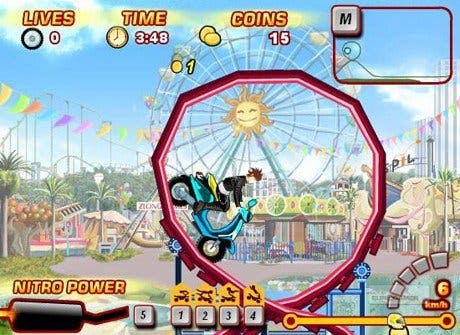Smart Casual?
Meet Spil, the Dutch publisher with an audience larger than Nintendo's.
I ask Driessen if he and other casual game developers are more interested in mining this new audience for money than enriching their lives through thoughtful game design. "I don't think that's fair, no," he counters. "There is a balance between numbers and creativity.
"If you look at a company like PopCap, they started making games out of their own desire to create something with added value to an audience. They haven't started by analysing a spreadsheet. They have done it the other way around. We like to see ourselves as sitting somewhere between Zynga, who take a very analytics, numbers-based approach to creating games, and PopCap, who focus much more upon adding user value."
How do you strike that balance in reality? "We start by examining what our audiences like, and we bring in more analytical data to see what people are playing and for how long, what's working and what's not. We can see where people stop, and on which level and from that try to work out why. If you really know that then you can... really go into the game and look at what you can do better."
Despite what Driessen says, he is still a businessman primarily, not an artist. When I quiz him on what he hopes to achieve next, his initial answer comes in the form of talking partnerships with other brands ("the integration of brands into our own brands," he says, in unpleasant marketing speak). But considering that Spil's business model still achieves 70 per cent of its income through advertising and 30 per cent through micro-transactions, perhaps this isn't entirely surprising.
"Will the 500 million players that Spil's three most-played games have entertained this year reminisce in 20 years about Professor Purse or Uphill Rush in the same way we reminisce about Mario and Zelda?"
Many core gamers might be eager to dismiss Spil's work as entirely separate from their chosen area of video games. Casual gaming, in Spil's definition of the term, has little to do with gaming's true-Sega-blue heritage, no? Except, judged by sheer number of players, Spil Games has been the largest game network in the world since 2008. While today's gamers in their 30s and 40s grew up playing Game Boy, Spil's ubiquitous sites serve a far larger portion of today's young players, setting video game trends, fashions and behaviours for an entire generation.
The worry is that Spil is perhaps contributing to a dumbing down of game design. "Our games must have simple gameplay so players can learn while they play, without having to read," explains Driessen. "It's important not to overcomplicate things. There can be too much depth. If you want to reach a large audience, then your game must have a casual twist."
These views are anathema to casual gaming's detractors, who argue that the desire for even more broad audiences is resulting in the death of complexity and nuance in games for younger players. Is Spil's rise evidence of the decline of more substantial games - ones that demand more than 20 minutes of your time, and which embrace complexity and challenge?

There are questions that only time can answer. Will the 500 million plays that Spil's three most-played games have entertained this year reminisce in 20 years about Professor Purse or Uphill Rush in the same way we reminisce about Mario and Zelda? Do players just view games such as Lose The Heat - an impressive Shockwave-based car chase game - as throwaway distractions, or as cultural touchstones in a valued medium?
But while more traditional game designers such as Kalberg are willing to make the leap to casual game development, there's a chance that this new, low-risk, high-output frontier will give rise to some classics. "In all the time I've been working here, while I've been challenged on certain ideas and been asked to work on them before they've gone into development, I don't think I've had a single idea canned," he says to me, a wide grin on his face.
"And let's be honest, how many game designers in mainstream console development can say that?"








